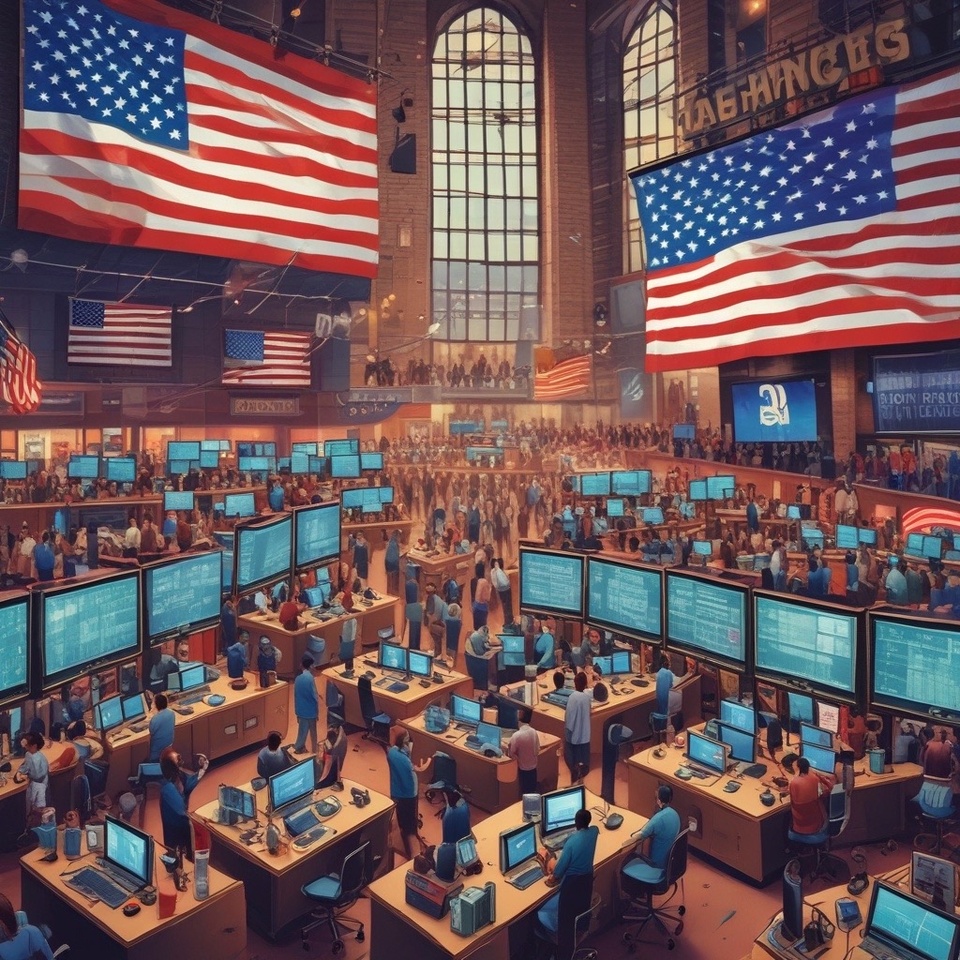I really have a lot of USA through my MSCI, so maybe I can balance it out a bit ☺️
Portfolio is growing slowly, it's really fun.
Have a great day!
Best regards
Moses

Posts
23$VUAG (-0.62%) (but the acc version, not the dist one)
$EIMI (-1.17%) (again the acc version)
Any suggestions?
After a year of starting to invest and lots of learning, I am deciding to focus mainly on ETF.
I had decided to start balancing my portfolio putting less focus on USA (currently over 60%) .I am planning to achieve 5 ETF with a 20% distribution on each of them.
I am planning to sell my only stock the future($Apple) and add the following ETF:
I would like to read your opinion/advice, thanks in advance for your feedback :)
Hello, I have decided to include two ETFs in my portfolio: an MSCI World and an MSCI World ex USA. These two ETFs make up the largest part of my portfolio.
The MSCI World consists of about 70% US stocks, and since I am already heavily invested in individual US stocks, I chose the MSCI World instead of the S&P 500 to avoid too much concentration. In addition, I have chosen the MSCI World ex USA to further diversify.
Of course there are overlaps, but you also have to look at the weightings that each ETF gives to the individual stocks.
What do you think?
Would a combination of S&P 500 and MSCI World ex USA have been better, or do you think my more diversified solution makes more sense?
#Thanks for your advice!
A few days ago, I shared a post asking for your thoughts on my portfolio setup. At that time, it was roughly 65% US market.
However, with the recent uncertainty around potential tax changes for non-US investors, I’m really starting to have doubts.. 😅 Maybe it could still take months before we get any certainty, so I’m unsure whether it’s better to wait it out or just move forward.
What would you do in my situation? Would you go ahead and invest as planned? Or would you increase the allocation to a World ex-US ETF $WEXU (-0.67%)
$EXUS (-0.86%) (maybe 15–30%), plus 5% EM, 5% EM small cap, and 5% India — and temporarily park the remaining 55–70% in gold until there’s more clarity on US tax regulations? Or is that gold-heavy approach too risky and keep the money safely on the sidelines for now?
Any thoughts or alternatives are very welcome! 🙏🏼
In a recent article, "Welt" pointed out the alternatives to the classic MSCI World when it comes to the "US share" cluster risk.
Almost 70 percent of the index is made up of US equities. And this can increasingly become a problem - especially in the age of US President Donald Trump.
This is precisely where the new ETF from BNP Paribas Asset Management comes in. The Easy MSCI World Equal Weight Select ETF (WKN: A417BH) reduces the US share to 35.8 percent.
The fund distributes all shares equally weighted. This means that it is not the big tech stocks such as Apple, Microsoft and Nvidia that set the tone, but every stock counts equally. In addition, stocks with the worst ESG ratings (environmental, social, governance) are excluded. This makes the fund a classic Article 8 fund - so it is also suitable for sustainability-oriented investors.
There is no longer a single US stock in the top 10 of this new index. Instead, there are European defense stocks such as $RHM (-0.77%)
Rheinmetall, $BA. (-2.08%)
BAE Systems and $SAAB B (-3.98%)
Saab. In the classic MSCI World, the first 23 stocks come from the USA - only in 24th place comes $SAP (-0.92%)
SAP comes a European.
In the current market phase, equally weighted variants have really caught up. They are up around one percent, while the MSCI World is down four percent. The MSCI World ex USA
$EXUS (-0.86%) performed even better. Since the beginning of the year, it is eleven percentage points ahead of the classic.
The Invesco MSCI World Equal Weight ETF has raised half a billion euros within a short space of time and the MSCI World ex USA has now raised 2.4 billion euros.
Source (excerpt): "Welt", 03.06.25 | Graphic: ChatGPT
What is your opinion? Do you think these ETFs are attractive? I look forward to your comments.

$EXUS (-0.86%) Why do you have a World ex USA ETF if it always shits in the same way when the Americans do shit? You talk about differentiation, what's the point?
Hi everyone,
I’m 28 and planning to invest €80,000 with a long-term, offensive strategy. I’m aiming for broad global diversification, focused on both value and growth. I’m totally fine having 60–70% of my portfolio allocated to the U.S. and with exposure to emerging markets as well.
Here’s a rough outline of the allocation I have in mind:
30–40%
Nasdaq 100
$EQQQ (-0.3%)
$XNAS (-0.28%)
$CSNDX (-0.27%)
15–25%
S&P 500
$VUAG (-0.62%)
$CSPX (-0.63%)
$SPYL (-0.59%)
10%
World ex US
$WEXU (-0.67%)
$IE000R4ZNTN3 (-0.65%)
$EXUS (-0.86%)
10%
Small Cap US Value
$ZPRV (-0.62%)
5% Small Cap World $WSML (-0.71%)
$ZPRS (-0.69%)
5% Emerging Markets (EM)
$EIMI (-1.17%)
$XMME (-1.07%)
5%
EM Small Cap
$SPYX (-0.9%)
5–10%
India UCITS ETF
$FLXI (-0.72%)
$QDV5 (-0.93%)
Additionally (5-10%), I’m considering adding one or two of the following ETFs – would love your thoughts on which one(s) you’d choose and why (or not):
Finally, I’m thinking of picking around 10 individual stocks as a satellite component. Any suggestions? 🚀
Curious to hear your feedback:
• What do you think of this ETF setup overall?
• Would you add or remove anything?
• Would you tweak the allocation? If yes, how and why?
I prefer accumulating ETFs only, and I plan to add €1,000–1,500 every month going forward.
Your thoughts are much appreciated! 🙏🏼😀
I am currently using the $ISAC (-0.64%) I am broadly diversified and generally well positioned, but I would like to be able to weight certain regions independently. I am thinking of the following ETF model:
My idea would be (savings plan):
What do you think of the selected ETFs? How would you weight the ETFs in a savings plan with a view to the future?
I had described here https://getqu.in/wtMaho/ described an investment reserve that can generate an excess return with similar or lower volatility than the overall market.
Very abbreviated:
We hold 20% in cash bonds and gold and start buying in reset, pyranized with increasing leverage.
What has changed since the last post?
1. all US bonds and US dollar cash have been removed from the portfolio, the uncertainties surrounding the Mar-a-Lago Accord are simply too great in relation to the opportunity to take a few percentage points in currency gains.
2. as it was (rightly) pointed out that the strategy is somewhat fragmented, I decided to make a few small adjustments.
The inflation-linked government bonds have left the portfolio. On reflection, money market funds and long-dated bonds are completely sufficient to compensate for inflation. (thanks for the comment @SchlaubiSchlumpf )
The investment reserve therefore looks like this:
-------------------------------------------
EURO
30.0% Money Market $CSH2 (+0.02%)
30.0% German Gov. Bonds 7+Y $X03G (+0.06%)
-------------------------------------60%
Swiss Franc
20.0% Swiss Gov.Bonds 7-10Y $CH0440081393 (-0.14%)
-------------------------------------20%
Swiss Gold
20.0% Gold $EWG2 (-0.22%)
-------------------------------------20%
==========100%==========
3. on the way south, the portfolio has already been rebalanced twice.
In concrete terms, this means that bonds have been sold and the $VWCE (-0.7%) bought so that the 80/20 ratio is maintained.
The $ACWI in USD broke through the threshold of 10% to its all-time high today, whereby the first still leveraged position was built up.
Purchased were:
2.5% MSCI World Ex USA $EXUS (-0.86%)
1.0% MSCI USA 2x $CL2 (-1.36%)
This means that the first 17.5% of our investment reserve is now invested.
The next purchase will be made when the $ACWI 20% away from the ATH, which would then be around $100.00

Top creators this week